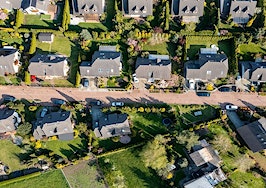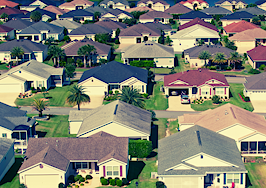In these times, double down — on your skills, on your knowledge, on you. Join us Aug. 8-10 at Inman Connect Las Vegas to lean into the shift and learn from the best. Get your ticket now for the best price.
The housing landscape is quickly improving for renters, which in turn is making things better for landlords and investors.
After a quick drop in demand for new apartments throughout much of 2022, renters are finding lower prices and more choices to pick from.
That decline follows nearly two years of record increases in the price of rent, and it’s being driven by builders who are adding more new apartments than at any point in the past 50 years, according to a new report from rental data firm RealPage.
“Apartment demand appears to be normalizing as expected so far this year,” RealPage Chief Economist Jay Parsons said. “That’s good news, but it’s still not enough to keep pace with new supply – and likely won’t be as completions peak later this year and well into 2024.”
Demand for new apartment leases fell to the lowest point in over a decade last year, defying typical seasonal trends and reversing a boom period from 2021.
Renters who usually sign new leases in the spring and summer backed away. At the same time, builders added 107,000 new apartment units in the last quarter alone, with another million on the way in the coming few years.
Weak demand and more supply led to higher vacancy rates, which in turn helped to drive rent down from its unprecedented levels of growth in 2021 and part of 2022.
Renters are now showing signs of stronger demand for new leases, RealPage economists said.
That’s especially true in the Sun Belt, which saw more than 75 percent of all net new demand in the U.S. in the second quarter.
“Demand continues to go where supply is going, which is normal,” said Carl Whitaker, senior director of research and analysis with RealPage. “Demand may not stay in lockstep with supply in the short term, but in the longer term, there’s still a need for more housing.”
The number of new units available to rent will be high in each of the next two years, Whitaker added.
Net demand for apartments was over 83,000 in the second quarter, RealPage said. That’s the highest level in over a year, but still well below the record numbers seen in 2021.
Some good news exists for owners of the apartments: Occupancy rates have stabilized after rapidly falling in 2022, according to RealPage.
Apartment buildings across the country are on average 94.7 percent full, RealPage said.
With all the new supply coming online, building owners and property managers are choosing to keep rent in check to keep buildings full, Parsons said.
“Occupancy came easy back in 2021 because there was so much more demand than supply,” Parsons said. “The tables have turned. And now supply is doing exactly what it’s supposed to do – giving renters more options and putting downward pressure on rent growth.”
Rent is set to potentially drop on a year-over-year basis later this year, and indeed the number of markets already reporting drops in rent has grown to 35 out of the nation’s biggest 150 markets, RealPage said.
Second-quarter rent cuts
- Boise: –6.2 percent
- Phoenix: –4.7 percent
- Las Vegas: –4 percent
That’s welcome news for renters in some markets that saw steep rent hikes during the COVID-19 housing market.
On Tuesday, the website WalletHub released a list of what it said were the best and worst places to be a renter, according to metrics ranging from the price of rent to vacancy rate and traffic.
WalletHub said Overland Park, Kansas; Scottsdale, Arizona; and Bismarck, North Dakota; were the best places to be a renter in the U.S.
Detroit was the worst place to be a renter, followed by Cleveland and Memphis, according to the website.
Get Inman’s Property Portfolio Newsletter delivered right to your inbox. A weekly roundup of news that real estate investors need to stay on top, delivered every Tuesday. Click here to subscribe.





















